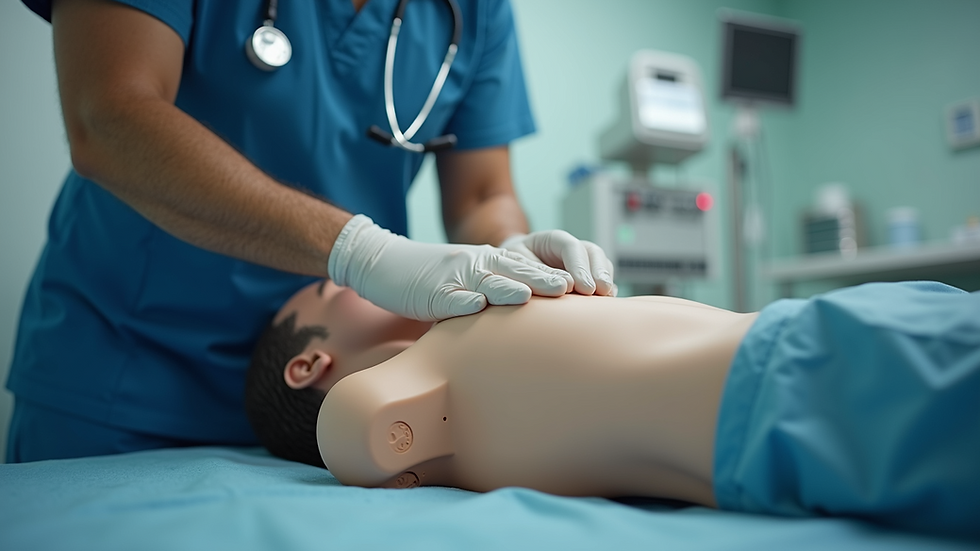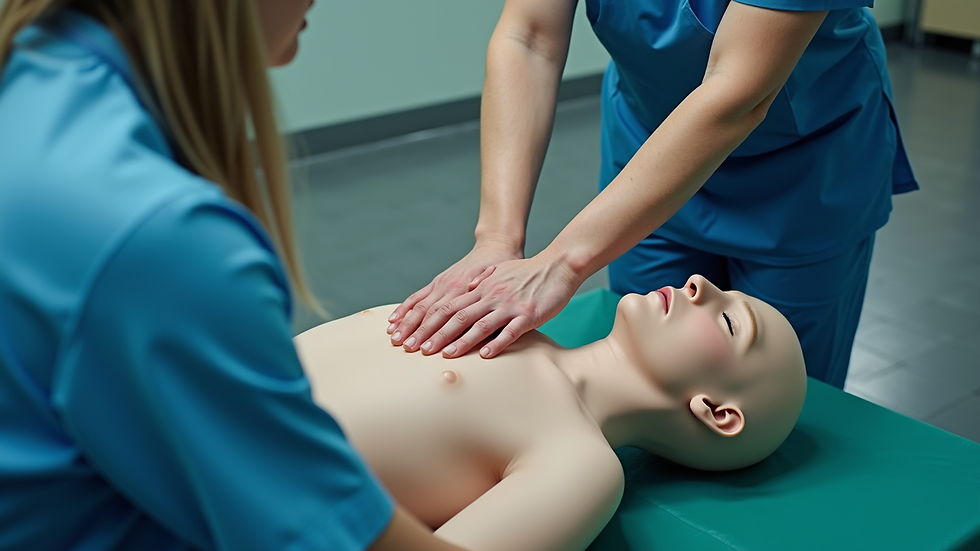Why BLS Certification is Essential for Healthcare Workers
- admin324551
- Jul 28
- 4 min read
In the fast-paced world of healthcare, every second counts. When emergencies arise, healthcare workers must be prepared to act swiftly and effectively. One of the most critical skills they can possess is Basic Life Support (BLS). This training equips professionals with the knowledge and techniques to save lives during cardiac and respiratory emergencies. Understanding why BLS certification is essential can help healthcare workers appreciate its value and encourage them to maintain their skills.
Understanding the Importance of BLS Certification
BLS certification is more than just a credential; it is a vital tool that empowers healthcare workers to respond confidently in life-threatening situations. The training covers essential skills such as performing high-quality chest compressions, delivering rescue breaths, and using automated external defibrillators (AEDs). These skills are crucial in stabilizing patients until advanced medical help arrives.
Healthcare workers often encounter emergencies where immediate intervention can mean the difference between life and death. For example, a nurse in a hospital ward might be the first to notice a patient experiencing cardiac arrest. Without BLS training, the nurse may hesitate or perform ineffective resuscitation, reducing the patient’s chances of survival. With proper certification, the nurse can act decisively, providing critical care that sustains life.
Moreover, BLS certification is often a mandatory requirement for many healthcare roles. It ensures that all staff members have a standardized level of competence in emergency response. This uniformity improves teamwork and communication during crises, leading to better patient outcomes.

Healthcare workers practicing essential life-saving techniques during BLS training.
Key Benefits of BLS Certification for Healthcare Workers
BLS certification offers numerous benefits that extend beyond the immediate ability to save lives. Here are some of the most important advantages:
Enhanced Confidence: Knowing how to perform life-saving procedures reduces anxiety during emergencies. Healthcare workers feel more prepared and capable.
Improved Patient Safety: Prompt and effective intervention increases the likelihood of patient survival and reduces complications.
Professional Development: Certification adds value to a healthcare worker’s resume and can open doors to career advancement.
Legal Protection: Being certified demonstrates a commitment to professional standards, which can be important in legal or regulatory situations.
Team Coordination: BLS training promotes a common language and approach among healthcare teams, improving collaboration during emergencies.
For example, a paramedic with BLS certification can quickly assess a patient’s condition, initiate CPR, and coordinate with other emergency responders. This seamless teamwork can significantly improve the patient’s chances of recovery.

Automated External Defibrillator (AED) is a critical tool taught in BLS certification.
Is BLS and CPR the Same Thing?
Many people confuse Basic Life Support (BLS) with Cardiopulmonary Resuscitation (CPR), but they are not exactly the same. CPR is a component of BLS, focusing primarily on chest compressions and rescue breaths to maintain circulation and oxygenation during cardiac arrest.
BLS, on the other hand, is a broader set of skills that includes CPR but also covers:
Airway management: Techniques to keep the airway open and clear.
Use of AEDs: Training on how to operate defibrillators safely and effectively.
Recognition of emergencies: Identifying signs of cardiac arrest, choking, or respiratory distress.
Team dynamics: Coordinating with other healthcare providers during resuscitation efforts.
Understanding this distinction is important for healthcare workers because BLS certification ensures they are equipped with a comprehensive skill set, not just CPR. This knowledge enables them to handle a wider range of emergencies confidently.

Instructor demonstrating CPR and BLS techniques during a certification course.
How to Maintain and Renew Your BLS Certification
BLS certification is not a one-time achievement; it requires regular renewal to keep skills sharp and up to date with the latest guidelines. Most certification programs recommend renewal every two years. Here are some practical tips for maintaining your certification:
Schedule refresher courses: Enroll in refresher classes before your certification expires to review and practice skills.
Stay informed: Keep up with updates from organizations like the American Heart Association, which periodically revise BLS protocols.
Practice regularly: Use simulation tools or practice with colleagues to maintain muscle memory.
Apply skills in real life: Whenever possible, apply your training in clinical settings to reinforce learning.
Use reputable training providers: Choose accredited programs like bls certification to ensure quality education.
By following these steps, healthcare workers can ensure they remain competent and confident in their ability to respond to emergencies.
The Role of BLS Certification in Patient Outcomes
The ultimate goal of BLS certification is to improve patient outcomes during emergencies. Studies have shown that early and effective BLS interventions significantly increase survival rates for cardiac arrest victims. For instance, immediate CPR and AED use can double or triple a patient’s chance of survival.
Healthcare workers with BLS training are more likely to recognize early signs of distress and act promptly. This early intervention can prevent cardiac arrest or reduce the severity of complications. Additionally, BLS-trained professionals contribute to a culture of safety within healthcare facilities, encouraging continuous improvement in emergency preparedness.
Hospitals and clinics that prioritize BLS certification often report better overall patient safety records. This commitment to training reflects a dedication to high-quality care and can enhance the reputation of healthcare institutions.
Taking the Next Step in Your Healthcare Career
Obtaining and maintaining BLS certification is a crucial step for any healthcare worker committed to excellence. It not only equips you with life-saving skills but also demonstrates your dedication to patient care and professional growth.
If you have not yet earned your certification or need to renew it, consider enrolling in a comprehensive program. Quality training providers offer hands-on practice, expert instruction, and up-to-date materials to ensure you are fully prepared.
Remember, emergencies can happen anywhere and at any time. Being ready to respond can make all the difference. Invest in your skills today and be the healthcare professional who saves lives when it matters most.






Comentarios